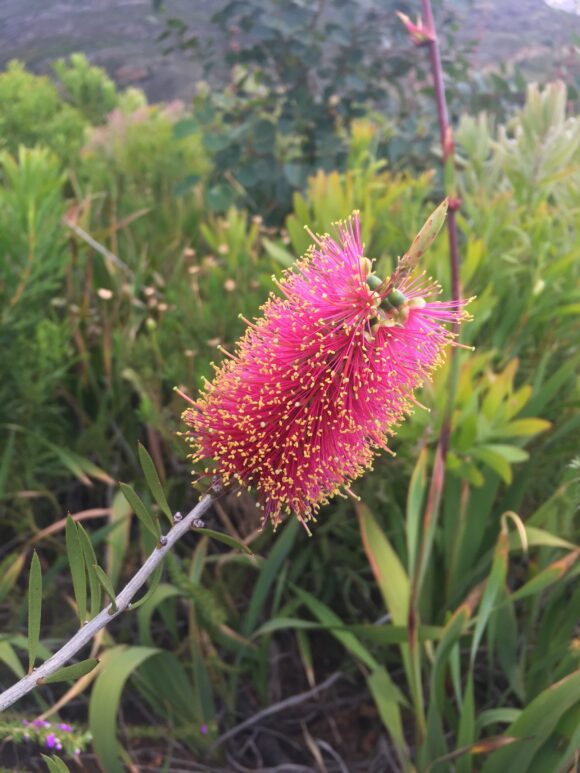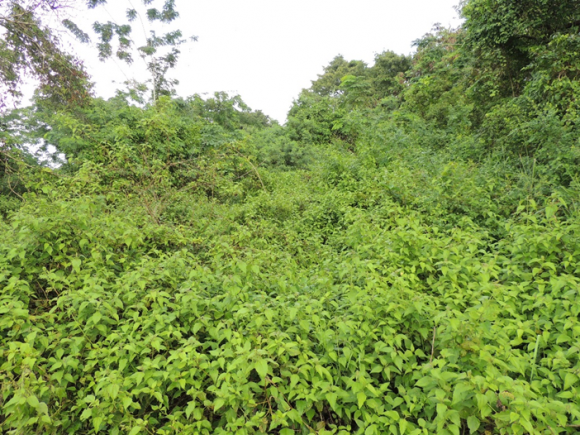6 June 2022 | By Chelsey Matthys
The listing of scarlet bottlebrush (Melaleuca rugulosa (Schlechtendal ex Link) Craven) as a Category 1a invader under the NEM:BA Alien and Invasive Species Regulations should be considered, stresses a new study published in the South African Journal of Botany.
The study, by C∙I∙B MSc student, Chelsey Matthys (funded by the South African National Biodiversity Institute) and C∙I∙B Associate, Prof Sjirk Geerts (based at Cape Peninsula University of Technology), together with colleagues documented the first detailed assessment of the distribution and invasive potential of scarlet bottlebrush in South Africa.
Many Melaleuca species were introduced into South Africa as ornamental plants because of their charismatic show flowers. One such species is the Australian native, Melaleuca rugulosa, more commonly known as “scarlet bottlebrush”, named after its dark pink flower spikes and bright yellow anthers. Since not all introduced species are invasive and some remain as small populations within limited ranges and have the potential to become invasive under certain conditions − it is critical to assess the invasive potential of scarlet bottlebrush in South Africa.
In their assessment, Chelsey and colleagues found one naturalising population of ~665 individuals on the lower slopes of Devils Peak within the Table Mountain National Park.
Scarlet bottlebrush is currently not listed under the South African National Environmental Management: Biodiversity Act (10/ 2004) Alien and Invasive Species Lists, 2020. However, after assessing the population structure, determining the potential future distribution in South Africa using climatic variables, conducting a risk analysis, and considering the feasibility of eradication, Chelsey and colleagues suggest that scarlet bottlebrush should be listed as a Category 1a – alien invasive species that must, by law, be removed and destroyed.
“Our study found that scarlet bottlebrush has the potential to become a major invader in fynbos as the south-western Cape is climatically the most suitable area and the species’ fire-driven life cycle and resprouting is similar to other major invaders in Cape fynbos. Given that scarlet bottlebrush is not yet widespread in South Africa, we suggest it be listed as Category 1a,” says Chelsey.
Chelsey adds, “The methods used in this study can be applied to other alien species not listed on national legislation to determine whether it should be added to the list, and if so, which category it should be listed under. This information will be useful in addressing knowledge gaps in the presence/absence status of alien species within the country. Overall, it is a step towards creating frameworks and processes that inform and assist the management of alien species.”
Read the full paper
Matthys, C., Jubaseb, N., Visser, V. & Geerts, S. (2022) Distribution of Melaleuca rugulosa (Schlechtendal ex Link) Craven (Myrtaceae) in South Africa: Assessment of invasiveness and feasibility of Eradication. South African Journal of Botany 148: 228–237. DOI: https://doi.org/10.1016/j.sajb.2022.04.025
For more information, contact Sjirk Geerts at GEERTSS@cput.ac.za or Chelsey Matthys at chelseykmatthys@gmail.com
|
|
|




